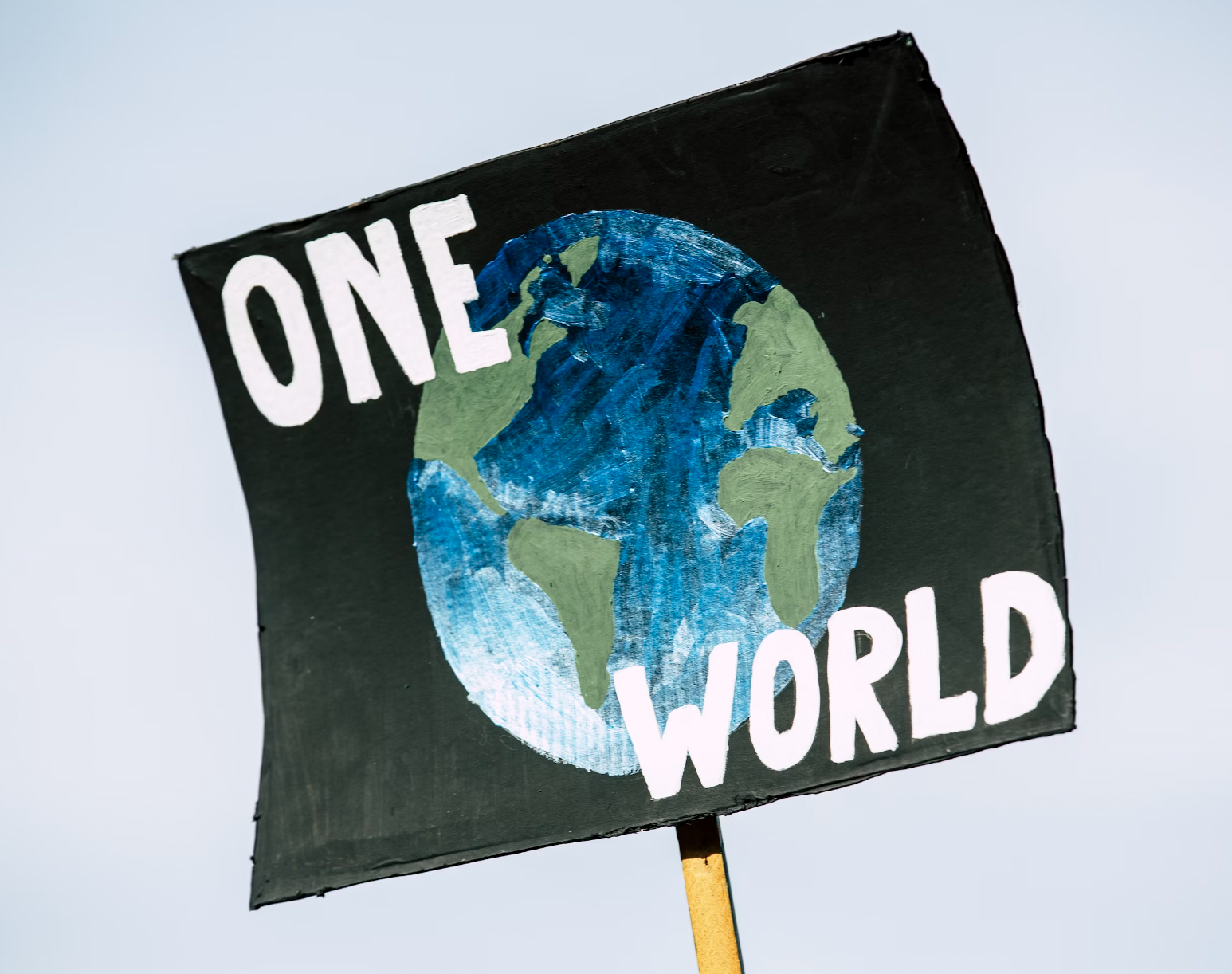PUBLISHED
Jun 06, 2024
WORDS
Noah Lipschitz
As businesses fail to hit sustainability goals, comms strategies must adapt, not die
Progress toward more sustainable business is good in some corners, bad in others. Revolt’s Noah Lipschitz argues that those falling behind must avoid the tempting trap to keep quiet.
Read the original article on The Drum

We’re just months away from a vital half-way health check on the world’s progress on the UN’s Decade of Action for sustainable development.
The signs are not good from businesses that mobilized to set targets and goals for 2025. Only 27% of businesses who pledged The Ellen MacArthur Foundation’s global commitment to stop plastic packaging becoming waste will meet their half-stage targets. And research from Accenture back in 2022 found that 93% of companies will fail to achieve their net zero goals if they continue at their current pace of progress.
Some ambitious sustainability goals were always unlikely to be hit. In a flurry of sustainability passion, businesses set stretch targets which are great for inspiring action but arguably went beyond resource and capacity. Others were set with a more scientific approach, making them meaningful but still potentially impractical.
All of this poses a real challenge for marketers worried about communicating missed goals and the subsequent risk of consumers doubting future business promises and their competency to act on sustainability.
However, there are potentially even greater reputational risks for those tempted to stay silent and hope no one notices. With the right communication strategy, missed goals can in fact be turned into an opportunity for renewed action that drives both business and brand purpose. From my experience there are three common missed-goal scenarios that businesses face. With each, a potentially negative situation can be turned to a positive with the right approach.
The signs are not good from businesses that mobilized to set targets and goals for 2025. Only 27% of businesses who pledged The Ellen MacArthur Foundation’s global commitment to stop plastic packaging becoming waste will meet their half-stage targets. And research from Accenture back in 2022 found that 93% of companies will fail to achieve their net zero goals if they continue at their current pace of progress.
Some ambitious sustainability goals were always unlikely to be hit. In a flurry of sustainability passion, businesses set stretch targets which are great for inspiring action but arguably went beyond resource and capacity. Others were set with a more scientific approach, making them meaningful but still potentially impractical.
All of this poses a real challenge for marketers worried about communicating missed goals and the subsequent risk of consumers doubting future business promises and their competency to act on sustainability.
However, there are potentially even greater reputational risks for those tempted to stay silent and hope no one notices. With the right communication strategy, missed goals can in fact be turned into an opportunity for renewed action that drives both business and brand purpose. From my experience there are three common missed-goal scenarios that businesses face. With each, a potentially negative situation can be turned to a positive with the right approach.
Scenario 1: You’ve set the right goal, but you’re not going to hit it in time
So you’ve made progress towards a goal, but not enough to make the claim that you’ve achieved it. If this is the case, there’s probably a good reason why you set the goal in the first place and the last thing you want to do is water down the goal.
In this scenario, it’s important to acknowledge why the goal has not been achieved. By explaining the obstacles you faced and the complexities in solving the problem at hand, you can lay the foundations for what comes next: new action. The key to not sounding like you’re making excuses is to use the opportunity to announce new partnerships, investments, innovations and ways of thinking that are being mobilized to hit your goals.
Transparency is key, communicating where you have been and where you are going. This can include acknowledging the difficulties and realities of achieving your goals. Tony’s Chocolonely even makes a feature of communicating not hitting its goals, reinforcing the scale of the challenge and noting they cannot guarantee their chocolate is slave-free despite all their best efforts.
In this scenario, it’s important to acknowledge why the goal has not been achieved. By explaining the obstacles you faced and the complexities in solving the problem at hand, you can lay the foundations for what comes next: new action. The key to not sounding like you’re making excuses is to use the opportunity to announce new partnerships, investments, innovations and ways of thinking that are being mobilized to hit your goals.
Transparency is key, communicating where you have been and where you are going. This can include acknowledging the difficulties and realities of achieving your goals. Tony’s Chocolonely even makes a feature of communicating not hitting its goals, reinforcing the scale of the challenge and noting they cannot guarantee their chocolate is slave-free despite all their best efforts.
Scenario 2: You’ve set the right goal, but you might never hit it
This is a scenario that many who’ve set a 100% target will encounter, from 100% sustainably sourced ingredients, to zero carbon or zero waste. The tricky part of a 100% goal is that even the smallest imperfection can mean it’s never achieved. But hopefully, you have made good progress towards these goals and you have some positive impact to point to.
There are two communication options here. Which one you choose depends on how directly the goal is connected to the higher mission that your business is trying to achieve.
The first is to push on and reconfirm your commitment to solving the problems in the way of your goal, no matter how long it takes. This is especially relevant when goals are closely connected to the driving mission of a business. For example, Mars Petcare’s goal is to end pet homelessness, but as long as there’s one homeless pet out there this goal can’t be reached. As a result, communication is focused on mobilizing action to help reduce homelessness.
The second option is to declare the progress you’ve made as the best possible outcome your business can achieve today. This makes sense when what is left to reach 100% is too far out of your business’ control. You keep the target and maintain good performance, but shift your energy and investment to a new, better area of focus. Since setting a 2020 goal to achieve a deforestation-free supply chain in palm oil, paper and board, tea, soy and cocoa, Unilever has achieved 97.5%. So while it is continuing to focus on this goal, it’s now investing resources in areas where it can make bigger, faster impacts.
There are two communication options here. Which one you choose depends on how directly the goal is connected to the higher mission that your business is trying to achieve.
The first is to push on and reconfirm your commitment to solving the problems in the way of your goal, no matter how long it takes. This is especially relevant when goals are closely connected to the driving mission of a business. For example, Mars Petcare’s goal is to end pet homelessness, but as long as there’s one homeless pet out there this goal can’t be reached. As a result, communication is focused on mobilizing action to help reduce homelessness.
The second option is to declare the progress you’ve made as the best possible outcome your business can achieve today. This makes sense when what is left to reach 100% is too far out of your business’ control. You keep the target and maintain good performance, but shift your energy and investment to a new, better area of focus. Since setting a 2020 goal to achieve a deforestation-free supply chain in palm oil, paper and board, tea, soy and cocoa, Unilever has achieved 97.5%. So while it is continuing to focus on this goal, it’s now investing resources in areas where it can make bigger, faster impacts.
Scenario 3: You’ve set the wrong goal in the first place
In this scenario, regardless of the progress made, you’ve realized it was the wrong goal to focus on. This is when the instinct to stay quiet is greatest. A better approach is to be transparent about why the goal was wrong in the first place and announce a new, better action that will take its place.
Consumers can lose trust if your goal was built on shaky inputs, but this can be recovered by announcing your focus on more robust action. Nestlé is one of many businesses that had implemented carbon offset strategies to achieve carbon neutral goals, but has now prioritized carbon insetting and reduction strategies.
It’s important for businesses to show the rigorous approach that has led to abandoning the goal. By taking consumers on this journey, we can build understanding instead of disappointment. Lego has tested over 300 different materials for its bricks as part of a goal to reduce carbon emissions 37% by 2032, and become net zero by 2050. After two years of testing, the brand learned that this would not reduce the product’s carbon footprint. So Lego has reaffirmed its commitment to develop new materials and explore other ways to make our bricks more sustainable.
Consumers can lose trust if your goal was built on shaky inputs, but this can be recovered by announcing your focus on more robust action. Nestlé is one of many businesses that had implemented carbon offset strategies to achieve carbon neutral goals, but has now prioritized carbon insetting and reduction strategies.
It’s important for businesses to show the rigorous approach that has led to abandoning the goal. By taking consumers on this journey, we can build understanding instead of disappointment. Lego has tested over 300 different materials for its bricks as part of a goal to reduce carbon emissions 37% by 2032, and become net zero by 2050. After two years of testing, the brand learned that this would not reduce the product’s carbon footprint. So Lego has reaffirmed its commitment to develop new materials and explore other ways to make our bricks more sustainable.
2025 goals are the dress rehearsal for 2030
A transparent and authentic communication strategy can take the sting out of missed sustainability goals. However, in order to remedy the situation of missed goals, businesses need to see them as an opportunity to supercharge new action, informing consumers of what’s to come. While many eyes will be on 2025 goals, even more attention will be paid to 2030 goals when the UN’s Sustainable Development Goals should be achieved. This will be the pivotal moment for if we are on the right track to create a better world.
Your Cookie Settings
By clicking 'Accept All Cookies', you agree to the storing of cookies on your device to enhance site navigation, analyse site usage, and assist in our marketing efforts.



